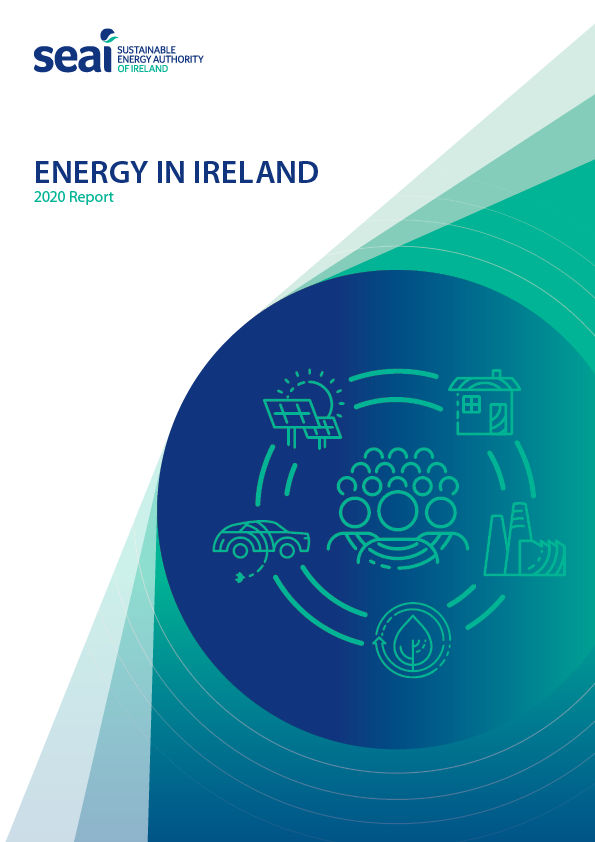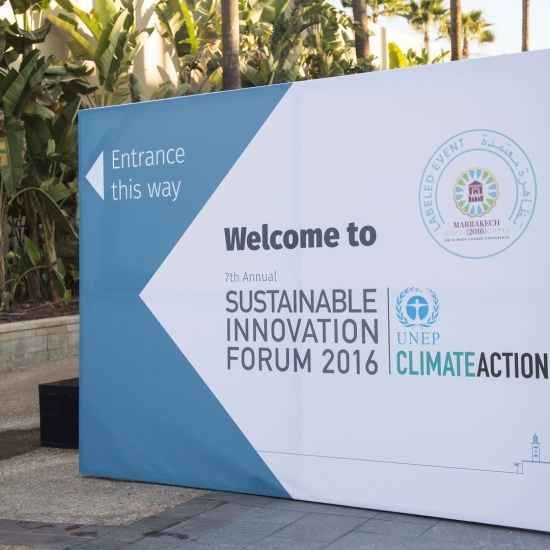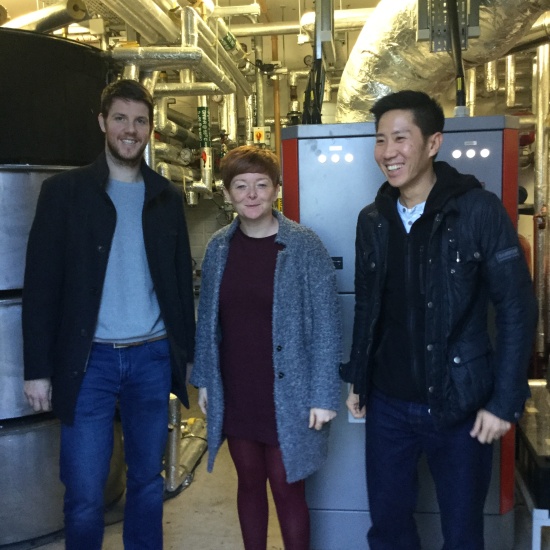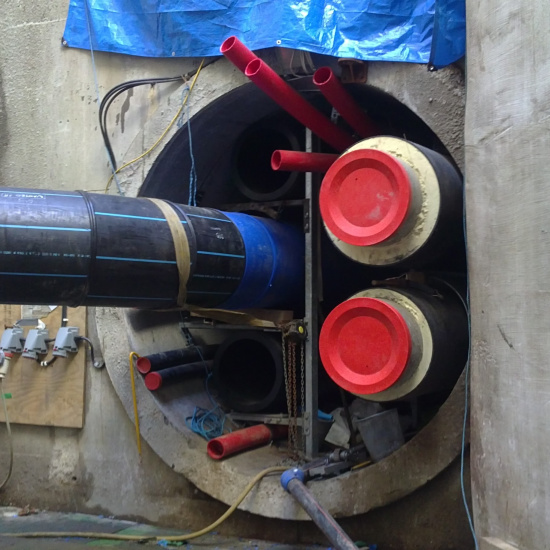Energy in Ireland: 2020 reflections
Energy in Ireland is now in its 19th edition and it feels a bit like the current 'how it started, how it's going' meme doing the rounds. It started in 2002 when SEAI took over the production and reporting of energy statistics, which was also around the same time that Ireland ratified the Kyoto Protocol.
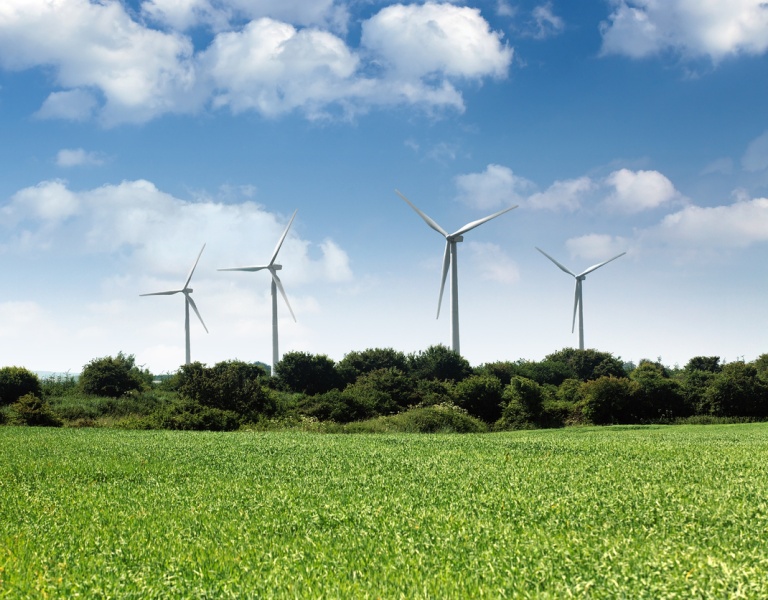
The first edition covered the period 1990 to 2001 and was designed to provide information on energy supply and use in Ireland and how it contributed to our new commitments under the Protocol. We are now living through the final year of the second commitment period of the Kyoto Protocol and have since signed up to the landmark Paris Agreement.
Energy in Ireland 2020 report
The current edition of Energy in Ireland reports on energy use up to 2019 and interestingly, overall energy use in Ireland in 2019 was at almost the same level as in 2001, but CO2 emissions from energy are down by almost one fifth, while the economy is one and a half times as large.
Over the years since the first edition, SEAI has worked to increase the range and depth of energy statistics to meet increased demands for data both nationally and internationally. This data is used to monitor progress, develop policy, and to inform and educate us all, as a society, on the role we play in transitioning to a sustainable future. We are most grateful for the cooperation of all those that we request data from and for the help and guidance of the CSO in progressing the development of energy statistics in Ireland.
In 2020, we've added to the range and depth of energy statistics by incorporating the Business Energy Use survey results from the CSO into the energy balance and historic energy timeseries. This adds more detail to the subsectors of industry and provides a new breakdown of the services sector into a range of subsectors. We've also added some new energy sources and expanded the detail on others.
2019 trends
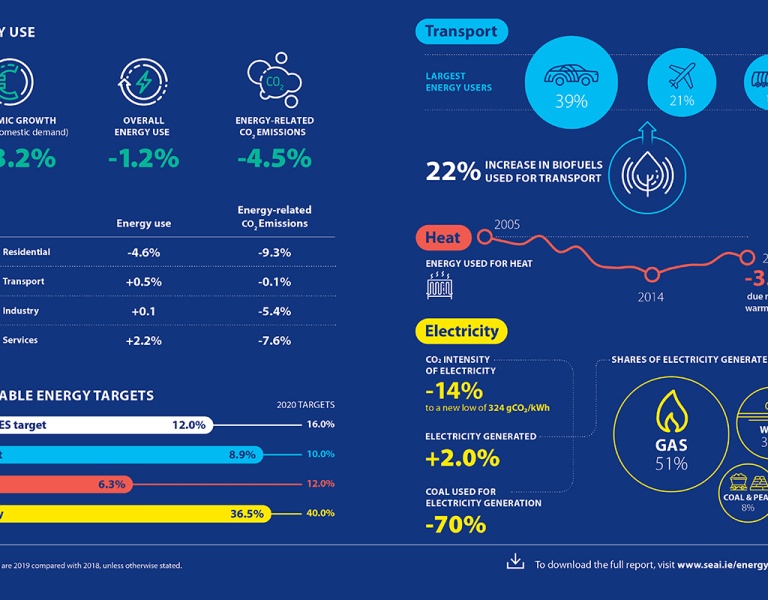
One of the big stories of 2019 is the further reduction in CO2 emissions intensity of electricity. Back in 2001, wind supplied approximately 1% of our electricity and coal 20%. The emissions intensity was 807 gCO2/kWh back then but in 2019, with coal generating less than 2% and wind 32%, the intensity is less than half at 324 gCO2/kWh. This was difficult to imagine back then but now the target of 40% of electricity from renewable sources is within sight by the end of this year.
Another first in 2019 was that energy use for air travel in Ireland reached a new high. How quickly things can change. Who could have foreseen the global pandemic that ensued this year? Transport is the sector that has been most affected by the pandemic in energy terms, with large falls in petrol and diesel usage during lockdown periods, and air transport suffering most since March. It is estimated that energy use for air travel in Ireland is down 64% year-to-date on last year and was down by over 80% in some months. These are levels of use that were last seen in the mid to late 1990s. We have included a short section in this year's Energy in Ireland report on the effect that the pandemic has had on energy use.
This highlights the need for short-term and more detailed energy statistics. In times of crisis we need to know as quickly as possible what's happening to demand and where potential problems are likely to arise. It is also helpful when we are getting close to crunch time for target deadlines that we know where we stand with regard to progress, or not, towards the final finishing line. We have had monthly data on our website on electricity and gas supply for some time now, and during the pandemic, we started producing a monthly report on these along with deliveries of oil products (petrol, diesel, kerosene etc) into the market. These reports are available on our website and next year we will add the monthly oil data on the website.
How's it going?
So 'how is it going' with Energy in Ireland? Well it has come a considerable distance since the first edition and the 2020 report, and the statistics behind it, have taken a further step forward. Our commitment is to continue to develop the Irish energy statistical system to provide accurate, coherent, comprehensive, timely and independent data and information as a support to policy formation and monitoring and to feed into research and projecting future requirements.
By Martin Howley, Programme Manager Energy Statistics, Sustainable Energy Authority of Ireland
